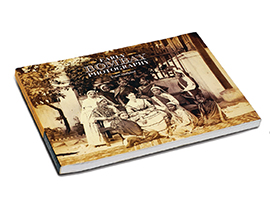 SSusan Hapgood is an art historian and curator based in New York. She resided in Mumbai from 2010-2014. She is a Senior Advisor to Independent Curators International & the Founder and Director of Mumbai Art Room. She has explored the evolution in photography in the Bombay of 1800s in her book, ‘Early Bombay Photography.’ It all began when the British used ‘Daguerreotypes’ and ‘Calotypes’ to capture the city in its various shades. The earliest picture was taken looking in the North direction along the newly built Colaba Causeway towards Fort.
SSusan Hapgood is an art historian and curator based in New York. She resided in Mumbai from 2010-2014. She is a Senior Advisor to Independent Curators International & the Founder and Director of Mumbai Art Room. She has explored the evolution in photography in the Bombay of 1800s in her book, ‘Early Bombay Photography.’ It all began when the British used ‘Daguerreotypes’ and ‘Calotypes’ to capture the city in its various shades. The earliest picture was taken looking in the North direction along the newly built Colaba Causeway towards Fort.
Reasons for people’s love for this art have been brought to the fore. These stemmed from the Europeans’ desire to be in loop with this technology. Another point was to highlight the political, social, scientific and aesthetic motives of the people.
Citing the names of some photographers like Narayan Daji, Hurrichand Chintamon, Shivshanker Narayen and Shapoor N. Bhedwar, she discusses the techniques of those times. She further studies the contribution made by these photographers and some European ones too. For example, from 1850s to 1880s, images were captured using wet collodian glass plate negatives placed in big cameras. These were quite inconvenient. Trends like these have been studied and analysed.
The book is rich in photographs that depict the life in Bombay. It is a treasure trove for anyone, who has longed to get a glimpse of this city in its early stages. Comprising of 95 photographs, each one is a collector’s pride.
The compilation has been published by Mapin Publishing in association with Contemporary Arts Trust, Mumbai ( Mumbai Art Room) supported by Navajibai Ratan Tata Trust and Sir Ratan Tata Trust. It is an expansion of ‘ A Fantastic Legacy: Early Bombay Photography.’ It was an exhibition that was conducted in 2013 by the Goethe Institute/ Max Mueller Bhavan in Mumbai as a part of the FOCUS Photography Festival. |SP
The book is priced at Rs. 1950
For more information, visit www.manipub.com

